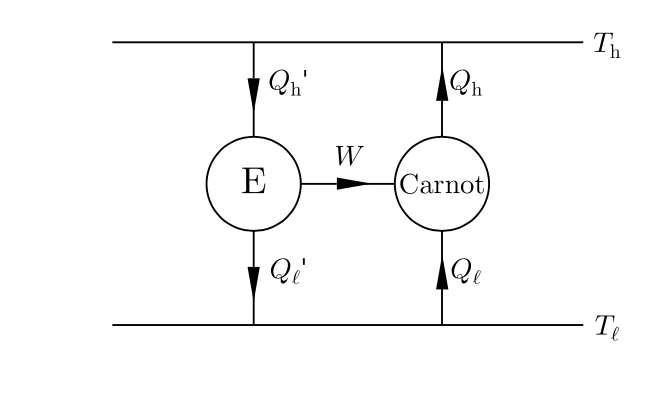In carnot engine we care about maximising the efficiency, i.e how much useful work we get out the given heat. Now what is interesting to note is that any reversible engine working between two temperatures has the same efficiency as that of a carnot cycle. Why is that so?
So first things first, what is the efficiency of a carnot cycle.

As you can see in the image the efficiency would be:
$$\eta_{carnot}=\frac{Q_h-Q_l}{Q_h}=1-\frac{T_l}{T_h}$$
Now, it is interesting that any real engine (irreversible) cannot be more efficient than a carnot engine.

In the figure, say E is an engine that is more efficient than a Carnot engine, since $\eta_E> \eta_{\text{carnot}}$ we can write:
$$\frac{W}{Q_h'}>\frac{W}{Q_h}$$
Using the first law of thermodynamics we have:
$$W=Q'_h-Q'_l=Q_h-Q_l \implies Q'_h-Q_h=Q'_l-Q_l$$
$Q'_h-Q_h$ represents the amount of heat dumped into the reservoir at $T_h$ and $Q'_l-Q_l$ represents the amount of heat extracted from the reservoir at $T_l$. Because both are positive that means all the system is doing is taking heat from one reservoir and dumping all of it in another, violating the second Clausius statement.
This is the Carnot's theorem.
Now, how do we prove that any reversible engine has the same efficiency?
Say we connected an engine R, with efficiency $\eta_R \leq \eta_{carnot}$ from carnot theorem. If we run the whole system but in reverse it will simply transfer heat from hot to cold reservoir, unless the efficiencies of both the engines are the same.

So, summing it up, we care about the efficiency not the amount of work per unit volume. Any reversible engine working between two temperatures have the same efficiency. And a real engine in general cannot be more efficient than a Carnot engine.
For further reading, read concepts in thermal physics by Blundell.






